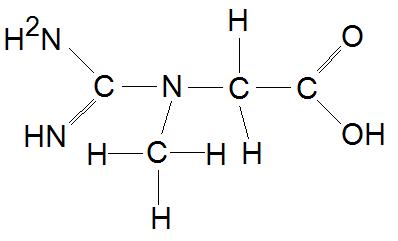Animal studies have limited relevance to human nutrition, but sometimes a study appears that is of sufficient interest to warrant discussion. One such paper published in the Journal of Nutrition is 20111, involved creatine supplementation to rats with non-alcoholic fatty liver (NAFL) disease. Non-alcoholic fatty liver disease is characterised by a raised hepatic triglyceride content, which can result in mitochondrial dysfunction, lipid peroxidation and inflammation. This can then progress to non-alcoholic steatohepatitis and death. The aetiology is not fully understood, but may involve impairment of methionine metabolism resulting in decreased activity of S-adenosylmethionine (SAM) and increased levels of homocysteine, the combination of which leads to oxidative stress. Support for this hypothesis comes from the success of betane supplementation in protecting the liver from fat accumulation, presumably through remethylation of homocysteine to methionine, which decreases homocysteine and increases precursors for SAM production.
About 1 to 2 g of creatine (figure 1) can be formed endogenously in the body via a multi-step reaction. First an amidino group of arginine is transferred to glycine to form guanidinoacetic acid (GAA) and ornithine in a reaction catalysed by arginine:glycine amidinotransferase (AGAT). Next a methyl group in transferred from SAM to GAA, a reaction catalysed by S-adenosylmethionine:guanidinoacetate N-methyltransferase. These two steps occur primarily in the kidney and liver tissue, respectively. The final products are creatine and SAM. Because endogenous creatine synthesis is accounts for around 40% of the SAM utilisation in the liver, its synthesis can be responsible for significantly lowering hepatic SAM concentrations. However, creatine is also provided by the diet in foods such as meat and fish and this source of creatine can spare the depletion of hepatic SAM, which could be beneficial to individuals with NAFL disease.
 Figure 1. The chemical structure of creatine.
Figure 1. The chemical structure of creatine.
Rats have been used to assess the effects of creatine on the development of NAFL disease through feeding of a high fat diet (71% energy from fat), a control diet (35% energy from fat) or a high fat diet with creatine (1% wt/v). The high fat diet caused an increased in total liver fat concentration, liver triglycerides, oxidative stress and decreased the hepatic SAM concentration significantly. However, addition of creatine to the high fat diet normalised these changes. Evidence that endogenous creatine was protective because of a sparing of SAM through decreased endogenous production of creatine came via reductions in the renal activity of AGAT and plasma GAA concentrations, as well as increases in the hepatic SAM concentration. Creatine also normalised the mRNA levels for creatine palmitoyltransferase and long chain acylCoA dehydrogenase, suggesting that expression of key genes required for β-oxidation had been increased.
RdB
